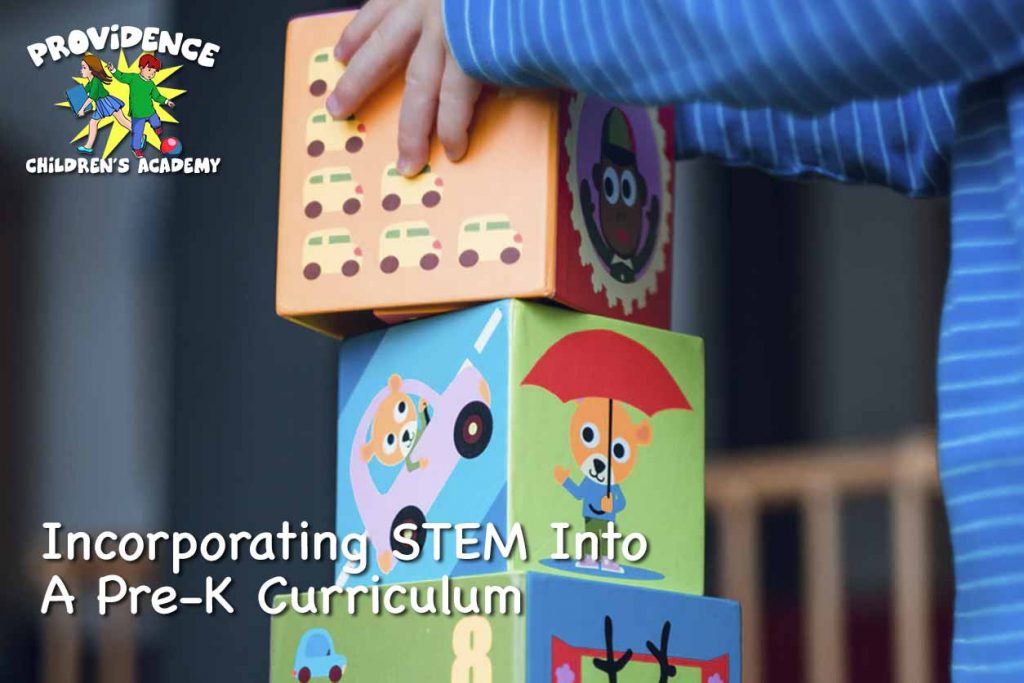
STEM is an acronym used to describe four major areas of learning; science, technology, engineering, and mathematics. STEM is built around the concept of integrating these four disciplines and applying them to real-world situations and problems.
When incorporating STEM into a Pre-K curriculum, some teachers prefer to keep the four areas separate at first, letting their students grasp the concepts fully before learning about how they interact. At Providence Children’s Academy, we invest in STEM-related activities because they can increase a student’s school readiness.
Why STEM?
No part of STEM education is more or less important than the other, and they all affect and work with each other. When introducing these big concepts to children, you start by showing them where STEM exists in the world around them.
Science
You can see science in the way flowers grow, and in how your body digests your food.
Technology
Technology is the reason you can watch your favorite movies, and call your grandparents over the weekend.
Engineering
Engineering is the way cities are designed and how buildings are planned.
Mathematics
You find mathematics when you count your fingers or add money when buying fun toys.
Talking to children about how STEM is present all around them is a great way to build interest in the concepts. Understanding these concepts goes hand-in-hand with developing your child’s problem-solving skills and out-the-box thinking.
STEM Activities
STEM concepts can be found nearly everywhere, so it’s easy to introduce them into a Pre-K Curriculum creatively. You can begin introducing STEM learning by explaining how and why things happen every day. To teach them about gravity, for example, have them jump up and down. Explain that gravity is the reason they don’t float away entirely.
Other everyday concepts teachers can introduce are:
Magnets
Magnets are the basis for endless forms of technology today – from fridge doors to supercomputers. Explore the concept by:
- Buying/making magnetic slime
- Design a maze on a piece of cardstock and use magnets to find your way through
- See what magnets will stick on around the house/in the garden
Structures
Learning about balance and strength in the buildings and objects around you is the beginning of understanding how to create things that will last. Fun things to do include:
- Stack different objects such as blocks, cups, or sticks
- Build a bridge out of marshmallows and straws/toothpicks
Plants
Learning about all things green is an exciting beginning to any budding scientist’s career! You can teach children about what plants need by:
- Growing beans using cotton balls
- Putting white flowers in water dyed with food coloring
Numbers
Many teenagers struggle with mathematics in high school because they’ve missed a foundational concept. Learning about numbers in Pre-K is an important part of understanding mathematics later on. Simple ways to introduce numbers include:
- Counting different objects around the house, or out the car window when driving home
- Learning about odd and even numbers
- Splitting animal toys into groups of different sizes
Space
Let’s face it – space is exciting. Teach Pre-K children about our solar system by:
- Making a paper plane “spaceship”
- Painting different size circles in the colors of the planets
- Design your own constellation by placing a torch in a toilet roll, wrapping tinfoil over one end of the toilet roll, and poking a design in the foil to watch the torch shine through
Your attitude towards STEM subjects will directly influence how enthusiastic children will be when starting to learn about Science, Technology, Engineering, and Mathematics related concepts. At Providence Children’s Academy our teachers encourage STEM learning in the classroom Both teachers and children have fun exploring the world around them and learning how STEM concepts are present all around.
